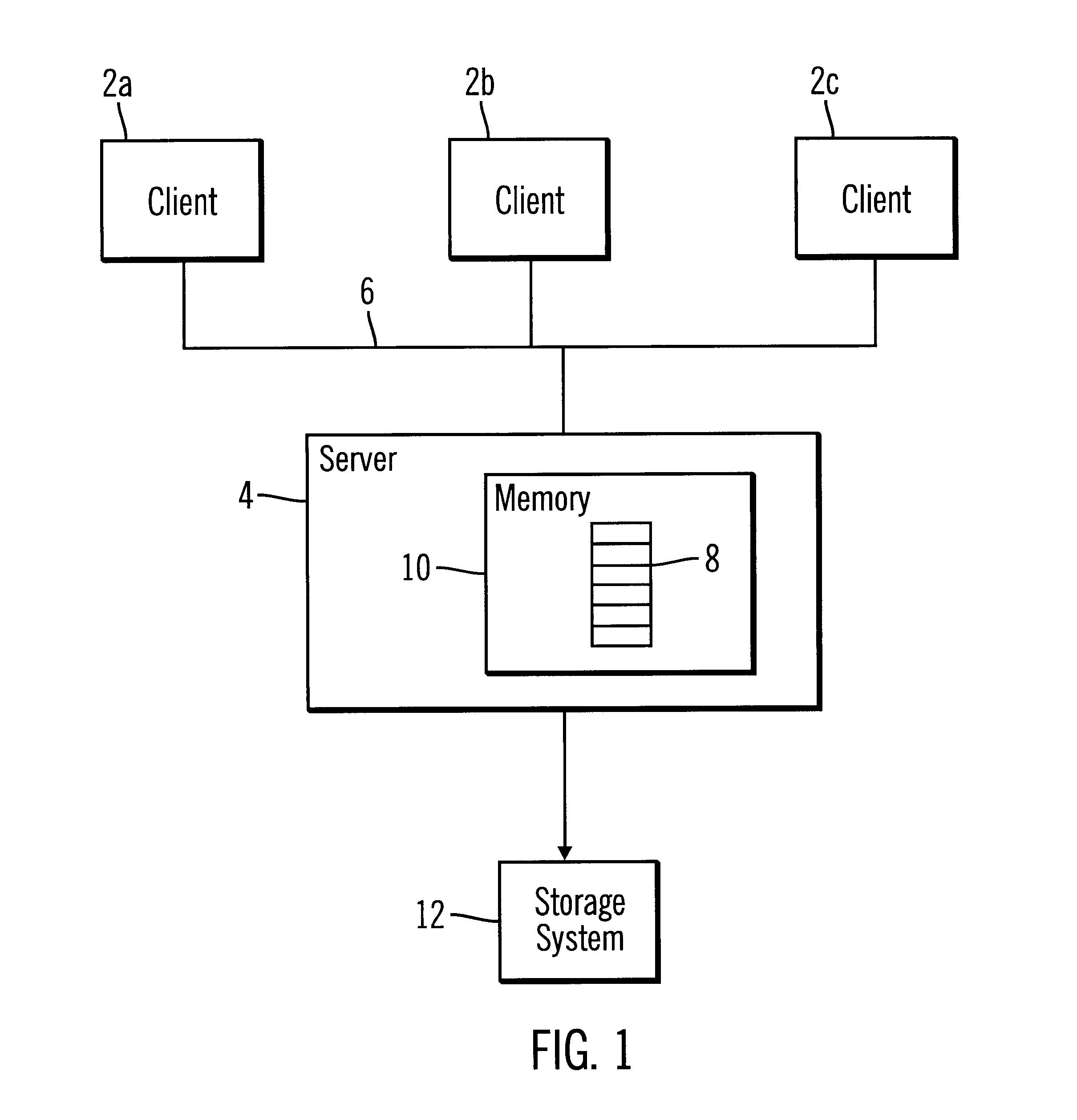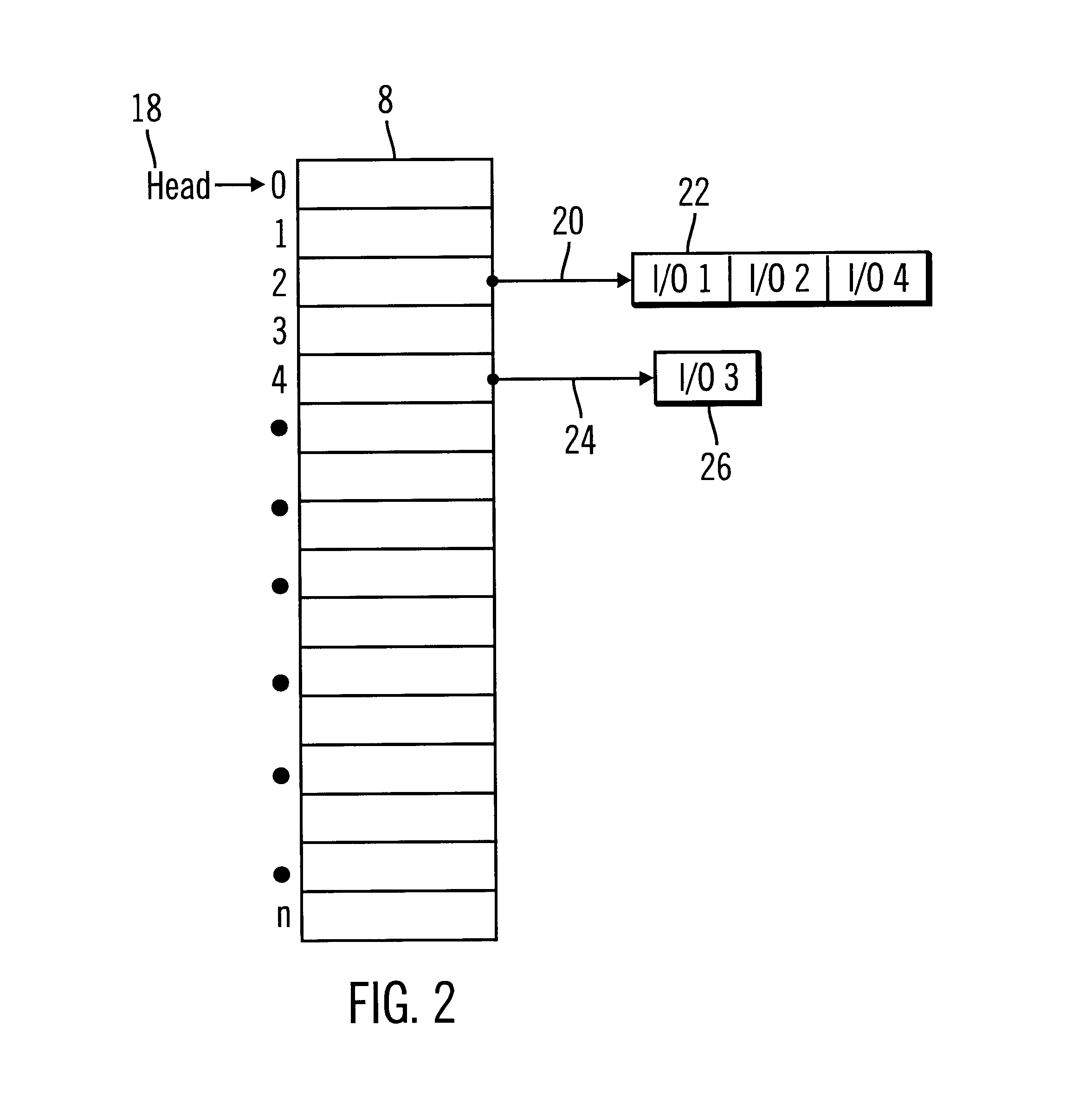Method, system, program, and data structure for queuing requests having different priorities
a technology of queuing request and priority, applied in multi-programming arrangements, instruments, data switching networks, etc., can solve problems such as no prioritization of requests, client delays in sending low-priority requests, and difficulty in determining the priority of requests for each client individually
- Summary
- Abstract
- Description
- Claims
- Application Information
AI Technical Summary
Benefits of technology
Problems solved by technology
Method used
Image
Examples
Embodiment Construction
To overcome the limitations in the prior art described above, preferred embodiments disclose a method, system, program, and data structure for queuing requests. Each request is associated with one of a plurality of priority levels. A queue is generated including a plurality of entries. Each entry corresponds to a priority level and a plurality of requests can be queued at one entry. When a new request having an associated priority is received to enqueue on the queue, a determination is made of an entry pointed to by a pointer. The priority associated with the new request is adjusted by a value such that the adjusted priority is associated with an entry different from the entry pointed to by the pointer. The new request is queued at one entry associated with the adjusted priority.
In further embodiments, to process queued requests, a determination is made of an entry at which requests are queued. The pointer is modified to point to the determined entry and the requests queued at the e...
PUM
 Login to View More
Login to View More Abstract
Description
Claims
Application Information
 Login to View More
Login to View More - R&D
- Intellectual Property
- Life Sciences
- Materials
- Tech Scout
- Unparalleled Data Quality
- Higher Quality Content
- 60% Fewer Hallucinations
Browse by: Latest US Patents, China's latest patents, Technical Efficacy Thesaurus, Application Domain, Technology Topic, Popular Technical Reports.
© 2025 PatSnap. All rights reserved.Legal|Privacy policy|Modern Slavery Act Transparency Statement|Sitemap|About US| Contact US: help@patsnap.com



